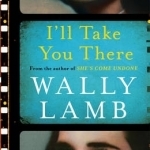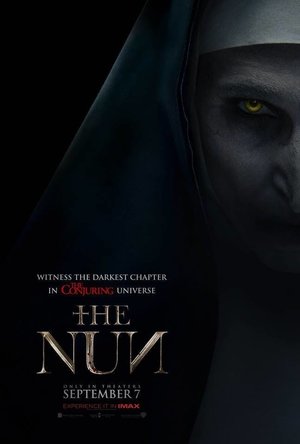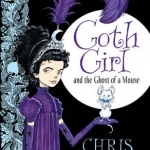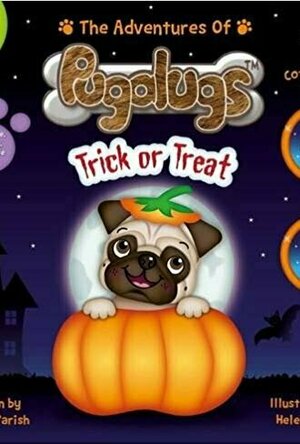Search
Phillip McSween (751 KP) rated Zombieland: Double Tap (2019) in Movies
Jan 17, 2020
Implausibility Can't Stop This Fun Movie
The gang from the original are back to deal with new issues and square off against new zombies. Definitely not as good as the first, Zombieland: Double Tap packs enough of an entertaining punch to be worth your while.
Acting: 10
Beginning: 10
Characters: 8
Cinematography/Visuals: 7
Conflict: 10
Between the group’s personal issues and loads beyond loads of zombies, the movie definitely isn’t short of conflict. The film wins ultimately with the originality and variety of the zombie kills. The action is fun and, although lighthearted at times, it keeps you engaged in the movie.
Entertainment Value: 8
There was some implausibility here that made it a challenge at times to enjoy the movie. I also felt like the movie spent more time than needed trying to “chase a ghost” rather than just stand out and be its own thing. In spite of those shortcomings, man was this movie fun to watch!
Memorability: 5
Its been-there-done-that feel keeps this movie out of the classics range. There are quite a few bright spots, but nothing that made me say, “I want to watch this again right now!” Good? Absolutely. Memorable? Meh…
Pace: 10
A quick adventure that moves at a solid clip. I was never bored at any point. In fact, I had to pee extremely bad at one point and was pissed (pun intended) I had to get up. Not surprising, I missed a pretty important part of the movie. Damn you, Alamo Drafthouse, for having bathrooms so far away! What I’m saying is, the story’s flow was extremely smooth.
Plot: 2
The story is so weak it’s maddening at times. I swear, if it wasn’t such an insanely fun movie to watch, I wouldn’t have scored it nearly as high. I say maddening because the first film had so many layers to it while this one seems content on being mediocre in story.
Resolution: 10
Fun ending with a great payoff. If you’re a fan of the original, make sure not to leave right away as the credits are coming up. Cracked me up for sure!
Overall: 80
Despite a plot as strong as Jello, Zombieland: Double Tap will entertain you if you allow yourself a suspension of disbelief. The fun characters and consistent action are enough to carry the movie as a whole. Not as good as the first, but certainly not the first sequel to suffer from that issue. I recommend!
Acting: 10
Beginning: 10
Characters: 8
Cinematography/Visuals: 7
Conflict: 10
Between the group’s personal issues and loads beyond loads of zombies, the movie definitely isn’t short of conflict. The film wins ultimately with the originality and variety of the zombie kills. The action is fun and, although lighthearted at times, it keeps you engaged in the movie.
Entertainment Value: 8
There was some implausibility here that made it a challenge at times to enjoy the movie. I also felt like the movie spent more time than needed trying to “chase a ghost” rather than just stand out and be its own thing. In spite of those shortcomings, man was this movie fun to watch!
Memorability: 5
Its been-there-done-that feel keeps this movie out of the classics range. There are quite a few bright spots, but nothing that made me say, “I want to watch this again right now!” Good? Absolutely. Memorable? Meh…
Pace: 10
A quick adventure that moves at a solid clip. I was never bored at any point. In fact, I had to pee extremely bad at one point and was pissed (pun intended) I had to get up. Not surprising, I missed a pretty important part of the movie. Damn you, Alamo Drafthouse, for having bathrooms so far away! What I’m saying is, the story’s flow was extremely smooth.
Plot: 2
The story is so weak it’s maddening at times. I swear, if it wasn’t such an insanely fun movie to watch, I wouldn’t have scored it nearly as high. I say maddening because the first film had so many layers to it while this one seems content on being mediocre in story.
Resolution: 10
Fun ending with a great payoff. If you’re a fan of the original, make sure not to leave right away as the credits are coming up. Cracked me up for sure!
Overall: 80
Despite a plot as strong as Jello, Zombieland: Double Tap will entertain you if you allow yourself a suspension of disbelief. The fun characters and consistent action are enough to carry the movie as a whole. Not as good as the first, but certainly not the first sequel to suffer from that issue. I recommend!
Whatchareadin (174 KP) rated I'll Take You There in Books
May 10, 2018
Felix Funicello is a film professor who lives in Connecticut. He is divorced and has one daughter, Eliza, who is currently working for New York Magazine. Felix also has two older sister, Simone and Frances who are an integral part of his life. Felix hold a movie club on Monday nights in the old Vaudeville theater in town. One night as he is setting up, he is visited by the ghost of Lois Weber, a renowned film director in her time. Lois shows Felix glimpses of his life along with the important women in it. Through these snapshots, Felix gains a greater understanding of the women in his life and women in general.
This book was reminiscent to A Christmas Carol, but he is visited by the same ghost, who brings three different visitors with her. Felix is first returned to his six year-old self. Where he and his sisters are helping their neighbor gather votes to become the next Rheingold Girl. Rheingold is a beer. This happens after his daughter tells him she has to write a piece about these girls.
The next transportation is a few years later when Felix is twelve. His mother and sister are talking in the kitchen about her boss being inappropriate with her at work. This part I heard just a few days after hearing day after day about a new man in a high position has been removed because of inappropriate behavior in the work place. Mind you, this is taking place in the early '60s and times were different, but some things never change. As Eliza, is telling her mother about what her boss has said, it's the mother's response that truly strikes me.
<i>"Men are men. Shapely girls like you just have to put up with stuff like that in the working world or else quit. Those are your choices."</i>
Thank God, those are no longer our choices, and that shouldn't have been the mentality then, maybe we wouldn't have all these issues today.
Also during this trip, Felix is given some news about his family that will change the dynamic forever.
The final time Lois comes to visit, the guest she brings, gives Felix a testimony that he has wondered about in the back of his mind for most of his life. That helps to fill a missing piece. The story is sad and is a part of the two previous visits from Lois.
All of these visits help Felix to be a better man, brother and father to the women in his life.
I think this is a very important book for all women to read, especially with the things going on in our world today. Told from the male point of view, I think it helps to see that some men can be empathetic to the plights of women. And this books covers a lot of those plights, from feminism, to abortion, adoption and acceptance. Years ago, I read She's Come Undone by Wally Lamb and I remember feeling the same way after reading it. Read them both.
This book was reminiscent to A Christmas Carol, but he is visited by the same ghost, who brings three different visitors with her. Felix is first returned to his six year-old self. Where he and his sisters are helping their neighbor gather votes to become the next Rheingold Girl. Rheingold is a beer. This happens after his daughter tells him she has to write a piece about these girls.
The next transportation is a few years later when Felix is twelve. His mother and sister are talking in the kitchen about her boss being inappropriate with her at work. This part I heard just a few days after hearing day after day about a new man in a high position has been removed because of inappropriate behavior in the work place. Mind you, this is taking place in the early '60s and times were different, but some things never change. As Eliza, is telling her mother about what her boss has said, it's the mother's response that truly strikes me.
<i>"Men are men. Shapely girls like you just have to put up with stuff like that in the working world or else quit. Those are your choices."</i>
Thank God, those are no longer our choices, and that shouldn't have been the mentality then, maybe we wouldn't have all these issues today.
Also during this trip, Felix is given some news about his family that will change the dynamic forever.
The final time Lois comes to visit, the guest she brings, gives Felix a testimony that he has wondered about in the back of his mind for most of his life. That helps to fill a missing piece. The story is sad and is a part of the two previous visits from Lois.
All of these visits help Felix to be a better man, brother and father to the women in his life.
I think this is a very important book for all women to read, especially with the things going on in our world today. Told from the male point of view, I think it helps to see that some men can be empathetic to the plights of women. And this books covers a lot of those plights, from feminism, to abortion, adoption and acceptance. Years ago, I read She's Come Undone by Wally Lamb and I remember feeling the same way after reading it. Read them both.
graveyardgremlin (7194 KP) rated Haunted (Harrison Investigation, #1) in Books
Feb 15, 2019
I picked up Haunted after I had finished [b:The Seance|959245|The Seance (Harrison Investigation, #5)|Heather Graham|http://photo.goodreads.com/books/1255876724s/959245.jpg|944150], and I was unaware that they both feature Adam and Harrison Investigations. I'm all set to read [b:The Vision|731809|The Vision (Harrison Investigation, #3)|Heather Graham|http://photo.goodreads.com/books/1177781638s/731809.jpg|717999] that I just picked up from the library. Even though I've completely juggled around the order of when they were written, it's lucky for me that they are standalones. In the prologue it gave background information about Adam's son, Josh, who was mentioned just briefly in The Seance, and he plays a big part in this book, so I was happy to find out all that information before I get to next book that features Harrison Investigations.
Now to get to the main story in Haunted...
Even though with the way Darcy was written you would think she was a Mary-Sue, she wasn't and I liked her just fine. Now Matt on the other hand, well he was a jerk, plain and simple. I never could like him much and that detracted a lot from the book. It seems that Heather Graham must make the male lead a hard-core skeptic that just will not believe (until the end of course) in anything paranormal and thinks the female lead is crazy or delusional or something. It would be nice if it was reversed or if maybe, just maybe, the hero is open-minded enough to say, well maybe there is 'something' out there that cannot be proven. *gasp* Is that even possible? Can a hero ever truly be open-minded? Not in these books. He has to be so narrow-minded that his thought-blocks must fit neatly into their right-shaped holes (e.g. triangle block into triangle hole, etc.).
I really enjoyed the whole Darcy/Josh/Adam/Ghost hunting thing. I thought the author did a good job describing how Darcy went about finding out about the ghosts and that's what made this book good. I really did like Darcy a lot and she was a sympathetic character who stood up for herself and acted like an adult with poise and class (unlike some other character I could mention). The mystery did keep me guessing because I was never quite sure who the ghost was or what had happened, although I had narrowed down who was behind everything to two people, leaning more on the actual culprit (yay me!), for lack of suspects. So overall, the mystery was very good, though I wish Ms. Graham would bring in more people so it isn't as easy to figure out. All in all, not as good as The Seance, but a good and entertaining read.
3.5 stars
I forgot to mention that there were tons of editing problems, which seem to be a mainstay in H.G.'s books. Once Clint's name is changed to Cliff and Josh was referred to as Matt, plus numerous other things that cropped up everywhere.
Now to get to the main story in Haunted...
Even though with the way Darcy was written you would think she was a Mary-Sue, she wasn't and I liked her just fine. Now Matt on the other hand, well he was a jerk, plain and simple. I never could like him much and that detracted a lot from the book. It seems that Heather Graham must make the male lead a hard-core skeptic that just will not believe (until the end of course) in anything paranormal and thinks the female lead is crazy or delusional or something. It would be nice if it was reversed or if maybe, just maybe, the hero is open-minded enough to say, well maybe there is 'something' out there that cannot be proven. *gasp* Is that even possible? Can a hero ever truly be open-minded? Not in these books. He has to be so narrow-minded that his thought-blocks must fit neatly into their right-shaped holes (e.g. triangle block into triangle hole, etc.).
I really enjoyed the whole Darcy/Josh/Adam/Ghost hunting thing. I thought the author did a good job describing how Darcy went about finding out about the ghosts and that's what made this book good. I really did like Darcy a lot and she was a sympathetic character who stood up for herself and acted like an adult with poise and class (unlike some other character I could mention). The mystery did keep me guessing because I was never quite sure who the ghost was or what had happened, although I had narrowed down who was behind everything to two people, leaning more on the actual culprit (yay me!), for lack of suspects. So overall, the mystery was very good, though I wish Ms. Graham would bring in more people so it isn't as easy to figure out. All in all, not as good as The Seance, but a good and entertaining read.
3.5 stars
I forgot to mention that there were tons of editing problems, which seem to be a mainstay in H.G.'s books. Once Clint's name is changed to Cliff and Josh was referred to as Matt, plus numerous other things that cropped up everywhere.
Neon's Nerd Nexus (360 KP) rated The Nun (2018) in Movies
May 14, 2019
Having nun of it
#thenunmovie is a camp & #silly mainstream #horror movie that while not great its still an enjoyable & ok watch. After hating every single film so far in the #thecounjuring universe I was tempted to boycott #nun, but after seeing it now I can say its the best film in the franchise (thats still not saying much really). Its defiantly a #fun watch but I wouldn't call it a horror at all (Commercial horror these days is more action orientated & Nun is no different). Relying on big set pieces full of #jumpscares & lots going on these films should be put in a new genre called 'Action Horror' they are essentially the #transformers of horror films. Although there is some awesome #creepy imagery here & some neat practical effects Nun fails at creating a creepy/unnerving atmosphere & the over use on poor cgi at times fails to keep the film feeling grounded. Sets also while impressive lack that dirty, grimey, damp, old, worn & lived in look making then feel like... well a set from a film. Everything's to perfect & neat & even lighting feels unrealistic too. Ideas/cinematography are all stolen straight from other horror films eg #darioargento films, #theexorcist or #nosferatu & while ok they are nothing in comparison. Acting is forgettable, either with characters either being over or under acted by the cast & half way into the film plot seems to be neglected in favour of set piece after set piece. I feel #TheNun will please its target audience (teenage girls looking for jump scares that will most likely talk throughout all the story & character development parts). While far from a good film its an ok film to watch if your not in the mood for thinking & want to see a nun that looks like #marilynmanson running round screaming at people. Oh & just a side note the ending is bad, like tacked on & abrupt bad. #odeon #odeonlimitless #filmbuff #filmreview #filmcritic #thursdaythoughts #gore #hell #conjuring #annabelle #ghost #demon #devil #exorcist #crusafix #satan
Cynthia Armistead (17 KP) rated Saltation (Theo Waitley, #2; Liaden Universe, #14) in Books
Mar 1, 2018
[b:Saltation (Theo Waitley, #2)|6669085|Saltation (Theo Waitley, #2) (Liaden Universe, #13)|Sharon Lee|http://photo.goodreads.com/books/1276362333s/6669085.jpg|6131174] is good enough that I finished [b:Fledgling (Theo Waitley, #1)|5585180|Fledgling (Theo Waitley, #1) (Liaden Universe, #12)|Sharon Lee|http://photo.goodreads.com/books/1256005889s/5585180.jpg|5756422], then read it in one sitting. It simply has the sort of momentum that doesn't allow for good stopping points — something that is true of many of the Liaden Universe novels.
At the end of Fledgling, Theo was sponsored into pilot school by Scout Cho sig'Radia. Saltation begins with her time there, just as politically naive as ever, but a much more confident person than she was at the beginning of Fledgling. Many of the characters from Fledgling reappear, including Win Ton, Kamele, and Jen Sar. There are new characters too, though, such as Kara ven'Arith and Orn Ald yos'Senchul (who, by the way, also appear in a free story, <a href="http://baen.com/LandedAlien.asp">Landed Alien</a>, that has just been released at the Baen web site and should be read after Saltation).
Theo is a legal adult now, but a very young one, and she has plenty of growing up left to do. That said, this is a young ADULT novel, not a children's book — while it isn't discussed specifically, Theo does take a lover.
She continues to flex and stretch into an admirable heroine. She isn't perfect, by any means, being sometimes short-tempered and not understanding social cues easily. She's someone readers can relate to, though, and that is important. We were brought up concurrent with the end of [b:I Dare|1103876|I Dare (Liaden Universe, #11)|Sharon Lee|http://photo.goodreads.com/books/1181013406s/1103876.jpg|1644933], which was vastly satisfying. I will go right on with reading [b:Ghost Ship|9762449|Ghost Ship (Liaden Universe, #14, Theo Waitley, #3)|Sharon Lee|http://photo.goodreads.com/books/1327880001s/9762449.jpg|14651808], because I definitely want to know more!
At the end of Fledgling, Theo was sponsored into pilot school by Scout Cho sig'Radia. Saltation begins with her time there, just as politically naive as ever, but a much more confident person than she was at the beginning of Fledgling. Many of the characters from Fledgling reappear, including Win Ton, Kamele, and Jen Sar. There are new characters too, though, such as Kara ven'Arith and Orn Ald yos'Senchul (who, by the way, also appear in a free story, <a href="http://baen.com/LandedAlien.asp">Landed Alien</a>, that has just been released at the Baen web site and should be read after Saltation).
Theo is a legal adult now, but a very young one, and she has plenty of growing up left to do. That said, this is a young ADULT novel, not a children's book — while it isn't discussed specifically, Theo does take a lover.
She continues to flex and stretch into an admirable heroine. She isn't perfect, by any means, being sometimes short-tempered and not understanding social cues easily. She's someone readers can relate to, though, and that is important. We were brought up concurrent with the end of [b:I Dare|1103876|I Dare (Liaden Universe, #11)|Sharon Lee|http://photo.goodreads.com/books/1181013406s/1103876.jpg|1644933], which was vastly satisfying. I will go right on with reading [b:Ghost Ship|9762449|Ghost Ship (Liaden Universe, #14, Theo Waitley, #3)|Sharon Lee|http://photo.goodreads.com/books/1327880001s/9762449.jpg|14651808], because I definitely want to know more!
Louise (64 KP) rated Goth Girl: and the Ghost of a Mouse in Books
Jul 2, 2018
Ada Goth lives in Ghastly-Gorm Hall with her father, servants and a few ghosts. Ada’s father likes to keep himself to himself even when it comes to his daughter, he makes her wear clumpy shoes so he can hear her coming. Ada is very much alone in this huge mansion style house until one evening she meets a ghost in the form of a Mouse called Ishmael. Ishmael informs Ada that he was killed by a Mouse trap and that he is to roam the hall for all eternity. Together they go and investigate the rooms in which Ishmael was killed when they come upon some strange things and other denizens.
The book had a lot of characters in it, all shapes and sizes all very whimsical but none have much depth to them, you don’t get to find out an awful lot. I wish Ishmael could have been in the book a bit more than he was. He was introduced in chapter 1 and then didn’t have much involvement. The story is very slow to start off with and only really starts to get going in the second half.
This book definitely had its quirks, I loved the use of the footnotes that were written by ‘The foot’ which made me chuckle. There is also literary references such as Von Hellsung and Hebe Poppins. The Comic book at the back was an added bonus! I didn’t realise this was included when I picked it up.
This book is beautiful, it has a purple ribbon and metallic page edges, inside the cover is decorated in a silver/gold foil and also there is an additional pocket with a miniature comic book called ‘Memoirs of Mouse’. Not only did Chris Riddell Illustrate this book but he also wrote it. I love his artwork, it’s so detailed and definitely stunning to look at all in black and white. Everything was on point regarding presentation.
Overall I rated this 3.5 stars out of 5.
The book had a lot of characters in it, all shapes and sizes all very whimsical but none have much depth to them, you don’t get to find out an awful lot. I wish Ishmael could have been in the book a bit more than he was. He was introduced in chapter 1 and then didn’t have much involvement. The story is very slow to start off with and only really starts to get going in the second half.
This book definitely had its quirks, I loved the use of the footnotes that were written by ‘The foot’ which made me chuckle. There is also literary references such as Von Hellsung and Hebe Poppins. The Comic book at the back was an added bonus! I didn’t realise this was included when I picked it up.
This book is beautiful, it has a purple ribbon and metallic page edges, inside the cover is decorated in a silver/gold foil and also there is an additional pocket with a miniature comic book called ‘Memoirs of Mouse’. Not only did Chris Riddell Illustrate this book but he also wrote it. I love his artwork, it’s so detailed and definitely stunning to look at all in black and white. Everything was on point regarding presentation.
Overall I rated this 3.5 stars out of 5.
Night Reader Reviews (683 KP) rated The Adventures of Pugalugs: Trick or Treat in Books
Jan 9, 2020
The Adventures of Pugalugs: Trick or Treat by Jessica Parish is the Halloween edition of Pugalugs. It is a cute story that should not scare children at all.
In this Halloween adventure Pugalugs is getting ready to go trick or treating with his siblings Dug and Bella. He starts digging through a chest full of costumes trying to find the perfect one. Unfortunately, he finds this task o be a bit on the difficult side. Pugalugs and his siblings seem to be able to find something wrong with every costume he tries out. He tries everything from a scary ghost to a silly pumpkin. Finally, at the very end, Pugalugs finds the perfect costume at the bottom of the chest. After getting dressed up Pugalugs surprise everyone with his wonderful disguise.
What I liked best was each of the costumes that Pugalugs tries on is cute in its own way. Pugalugs entertains children with his silly antics by tripping over the tail of one costume and getting all tangled up in another one. At the end, he decides the best thing to be is himself. What I didnt like was that this book was not quite what I expected, although that is not a problem. I was expecting Pugalugs to actually be trick or treating and possibly overcoming a fear. Instead, Pugalugs is getting ready to go trick or treating but never actually leaves the house.
Animal lovers of all ages will enjoy this fun Halloween book. Toddlers and young children will enjoy having this book read to them over and over again while slightly older children will enjoy reading it themselves. I rate this book 4 out of 4. The small paragraphs accompanied by full-page pictures keep the book from being intimidating to young readers. The rhymes in this book keep it moving at a steady speed and it has a wonderful lesson for children; be your self.
https://www.facebook.com/nightreaderreviews/
https://nightreaderreviews.blogspot.com/
In this Halloween adventure Pugalugs is getting ready to go trick or treating with his siblings Dug and Bella. He starts digging through a chest full of costumes trying to find the perfect one. Unfortunately, he finds this task o be a bit on the difficult side. Pugalugs and his siblings seem to be able to find something wrong with every costume he tries out. He tries everything from a scary ghost to a silly pumpkin. Finally, at the very end, Pugalugs finds the perfect costume at the bottom of the chest. After getting dressed up Pugalugs surprise everyone with his wonderful disguise.
What I liked best was each of the costumes that Pugalugs tries on is cute in its own way. Pugalugs entertains children with his silly antics by tripping over the tail of one costume and getting all tangled up in another one. At the end, he decides the best thing to be is himself. What I didnt like was that this book was not quite what I expected, although that is not a problem. I was expecting Pugalugs to actually be trick or treating and possibly overcoming a fear. Instead, Pugalugs is getting ready to go trick or treating but never actually leaves the house.
Animal lovers of all ages will enjoy this fun Halloween book. Toddlers and young children will enjoy having this book read to them over and over again while slightly older children will enjoy reading it themselves. I rate this book 4 out of 4. The small paragraphs accompanied by full-page pictures keep the book from being intimidating to young readers. The rhymes in this book keep it moving at a steady speed and it has a wonderful lesson for children; be your self.
https://www.facebook.com/nightreaderreviews/
https://nightreaderreviews.blogspot.com/
JT (287 KP) rated The Time Traveler's Wife (2009) in Movies
Mar 10, 2020
It’s hard to do something different with romance these days. Girl meets boy or vice versa. Boy falls in love with girl or vice versa. So every now and then it needs to do something a little different in order to give it a unique twist.
Patrick Swayze and Demi Moore had Ghost, Sandra Bullock and Keanu Reeves, The Lake House so The Time Traveller’s Wife had to go one step further. Special collections librarian Henry DeTamble (Eric Bana) has a genetic anomaly that allows him to time travel; however, he is not able to control the moment or the destiny of his voyages.
The film is based on the novel by Audrey Niffenegger and not having read the book it’s hard to say whether or not the film did it justice? That said, it’s elegantly shot and Bana and fellow on screen love interest Clare (Rachel McAdams) seem perfectly suited to their roles.
Bana is a likeable actor and has been portrayed in some pretty powerful films including Chopper, Black Hawk Down and Munich
A man who only has the love for one woman but is unable to control his ability in disappearing, he is desperate to find a cure and won’t let anything stand in his way. The time travelling plot is a little stupid. Henry is unable to control when he goes but always seems to pop up in similar places both in the past and the future, and always naked?
In the beginning he visits his wife Clare on more than one occasion as a child and as she grows older. Certainly it’s a better directed film than the Butterfly Effect in which Ashton Kutcher time travelled more often than a gas meter reader pops into your house.
The Time Traveller’s Wife is a film with nagging questions and at times head scratching conclusions but this is a love story of beauty, and for that it’s worth a watch.
Patrick Swayze and Demi Moore had Ghost, Sandra Bullock and Keanu Reeves, The Lake House so The Time Traveller’s Wife had to go one step further. Special collections librarian Henry DeTamble (Eric Bana) has a genetic anomaly that allows him to time travel; however, he is not able to control the moment or the destiny of his voyages.
The film is based on the novel by Audrey Niffenegger and not having read the book it’s hard to say whether or not the film did it justice? That said, it’s elegantly shot and Bana and fellow on screen love interest Clare (Rachel McAdams) seem perfectly suited to their roles.
Bana is a likeable actor and has been portrayed in some pretty powerful films including Chopper, Black Hawk Down and Munich
A man who only has the love for one woman but is unable to control his ability in disappearing, he is desperate to find a cure and won’t let anything stand in his way. The time travelling plot is a little stupid. Henry is unable to control when he goes but always seems to pop up in similar places both in the past and the future, and always naked?
In the beginning he visits his wife Clare on more than one occasion as a child and as she grows older. Certainly it’s a better directed film than the Butterfly Effect in which Ashton Kutcher time travelled more often than a gas meter reader pops into your house.
The Time Traveller’s Wife is a film with nagging questions and at times head scratching conclusions but this is a love story of beauty, and for that it’s worth a watch.
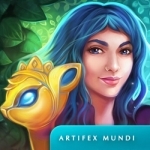
Tiny Tales: Heart of the Forest (Full)
Games and Stickers
App
FANTASTIC HIDDEN OBJECT PUZZLE ADVENTURE GAME FROM THE CREATORS OF ENIGMATIS AND GRIM LEGENDS! There...
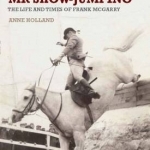
Ireland's Mr Show-Jumping: The Life and Times of Frank McGarry
Book
Frank McGarry was the 'father of Irish show-jumping' as it is known today. An entrepreneur and...

